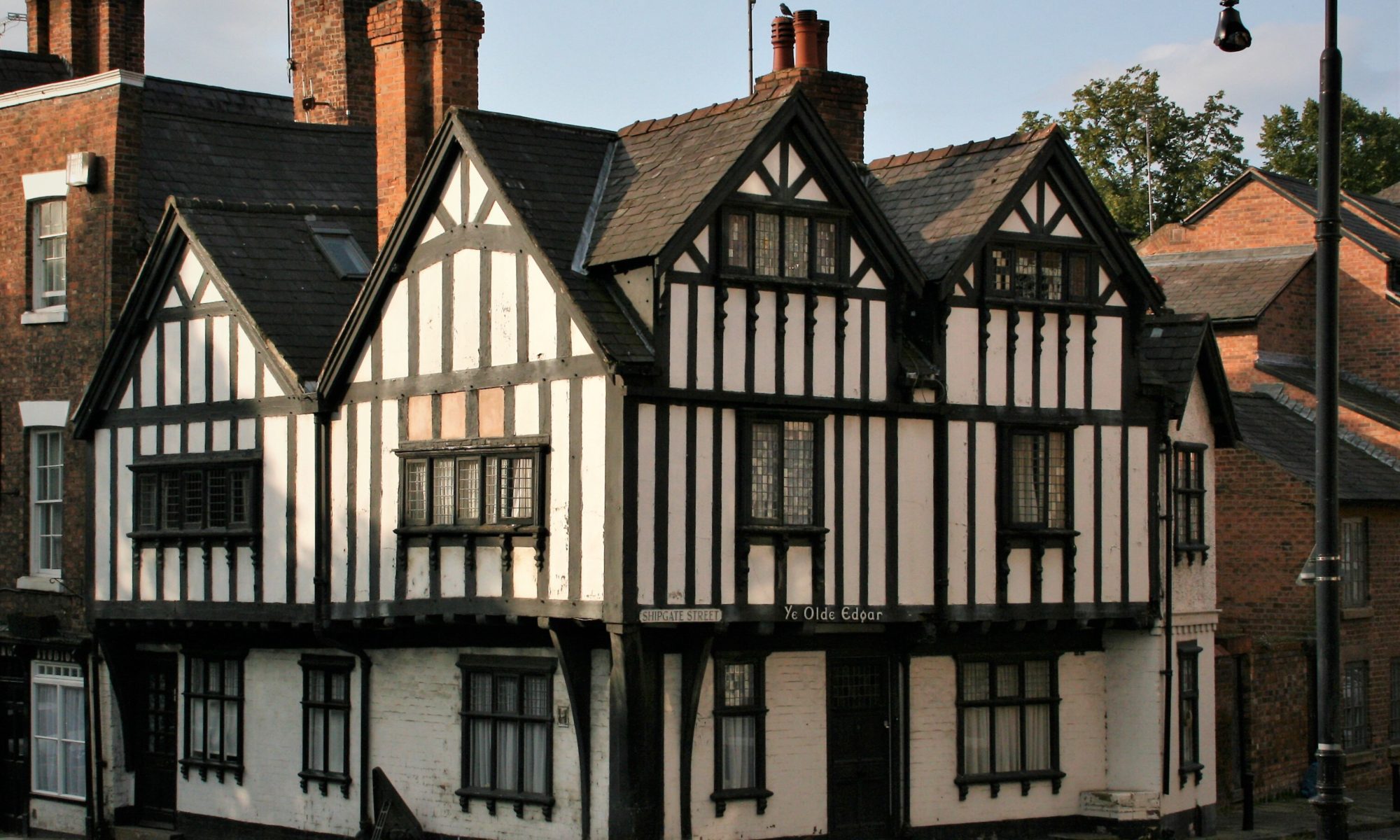It has taken two thousand years to create the Chester of today! The Romans established it as a port some 2 millennia ago and set up a fort here. The area was the ideal location for a gateway to the north. A lot has happened in Britain in the intervening time but there are still some Roman remains to be seen throughout the city. Parts of the wall are 2 millennia old. An amphitheatre can just about be made out along with some foundations in another location. Notes by one area close to the present town hall declare that the ruins on display are the remains of the heart of the fortress located at Deva.
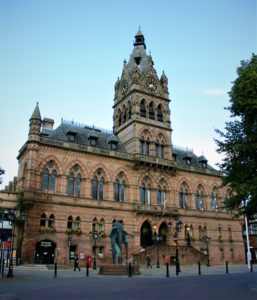
My knowledge of English history prior to 1066 is much weaker than that of the post 1066 era though this says very little. It was in Saxon times that Chester’s first cathedral was built; it remains to this day but in the form of ruins next to the St John the Baptist church. Entry to these ruins is free and there are notes on display boards to assist people like me who have little understanding of this part of British history.
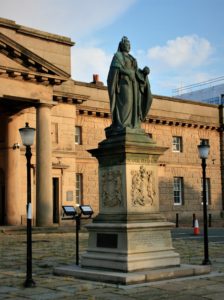
What was incredible to believe, as there was no evidence to back it up, was that this was once a key port! Chester sits on the river Dee which back then had not silted up, so it was accessible by boat. It was possible to reach Ireland by boat from here. During these times the city of Liverpool was nothing but 7 streets so, at that time, it was strategically more important than its famous Mersey neighbour. I have no idea what silting is (the dictionary says, ‘the process of becoming filled or blocked with silt and further says that silt is fine sand, clay, or other material carried by running water and deposited as a sediment, especially in a channel or harbour), but this was the main cause of the decline of Chester as a harbour. As a result, docks were removed with the last one going as late as the 1960s.
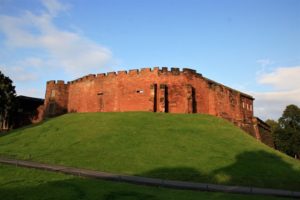
The river passes around half the city and the city’s racecourse. This charming setting seems to be slightly neglected. There is a noticeable lack of waterfront pubs and eateries which mean that there are not large gatherings of people here. That is to be considered as an advantage. Perhaps this will come. After walking along the riverbank for a short while, the path and banks are overgrown. Perhaps this is the reason for people staying in the city centre. I can see that improvements could be made along these banks to entice folks away from the hustle and bustle.
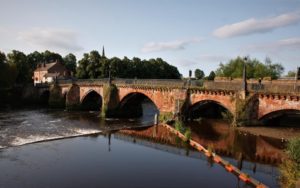
In spite of this there are some iconic bridges to explore. The Grosvenor bridge, from which, incidentally, a superb view of the racecourse is possible, is impressive. It is one of 3 main bridges across the river Dee with the majority of traffic crossing into the city via this Grosvenor bridge. Walking across the Old Dee bridges gives a view of one of the four gates through the city walls. The city boasts the most complete walls in the country and are a wonderful way to start exploring the city as they give an idea of its size, structure and layout. With all walls there must be entrance points, and as my meanderings grow, I will begin to learn more about this, but a common theme might be that these gates are located at the points of a compass.
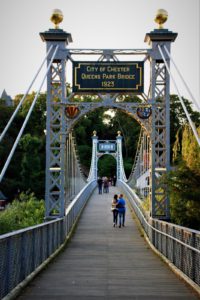
And so to the walls. As I trod along these walls it made me think about their very existence. Were they built to keep an enemy away and protect all that was encompassed by them? Why have they not remained in all cities? When walking these walls don’t be afraid to leave them for you never know what you might find either side of them. A castle? A blue coat hospital? Cannons that were used long ago? Walking along the walls as best as I could (repair works while I was there) I came across a round tower in the north eastern corner. It was constructed during the reign of Charles I, and now aptly named King Charles Tower. The city was loyal to Charles during the Civil War during the 17th century. It is alleged that Charles stood atop this tower and watched his army defeated at the battle of Rowton Moor. It would be difficult see as far as Rowton from this vantage point, but it may well have been that back then he saw soldiers returning from the affray.
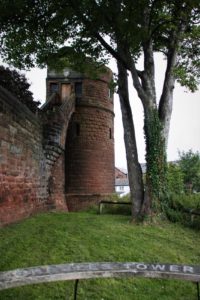
Inside the walls is where Chester’s true charm is to be found in, believe it or not, its distinguished shopping area!! The iconic black and white, half-timbered, buildings have lower levels that are shops. It is almost as if delightful architecture and functionality have become entangled through dreamy, though no doubt deliberate, design and that these buildings have stood the test of time. The double delight of the 700 year old row galleries captivate your immediate attention. Their brilliant design was surely light years ahead of its time. These black and white façades still remain in the modern dysfunctional British high streets. Chester seems to have a lure for shoppers and results in busy and overcrowded streets. As these old designs have remained, they were clearly not designed for the amount of people that now overcrowd these streets and there is a definite sense of being hemmed in.
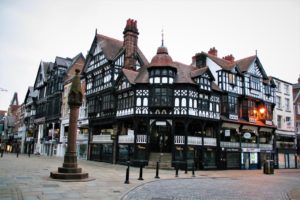
Not one for shopping and always pressed for time in these city visits I made my way to its cathedral. These cathedrals are located at the centre of most cities, and what were once the places where the heartbeat of the city was felt, now, sadly, sit as mausoleums. Chester’s cathedral was not one of my favourites. It is dark, dingy and ugly and could do with a good sandblast. Inside its dark nature owes much to its Victorian ‘restoration’. It’s home to colourful windows and is perhaps famous for its choir. It has weekly organ recitals, but, sadly, my visit tied in with some rather loud and dreary practice. A dour organ practice aside, there was the dreamy shopping mall, still sturdy walls that give the city a real sense of stronghold and leaves you captivated. A city etched with parts from the whole of Britain’s 2000-year history is really a ‘must do’ visit for all.
Chester, England, United Kingdom

